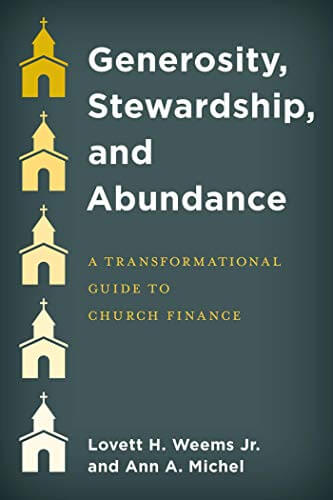Baby boomers and Gen Xers are currently the most critical donor base for most congregations. James Elrod says these generations want proof that their gifts are making a difference. He outlines four principles for measuring and reporting results.
A fundamental challenge for any church is to articulate to its members that their donations are making a difference because the church is making a difference. The problem for many established churches is that their donor management strategy is centered on answering this question with the Mature or Silent Generation (born between 1928 and 1945) in mind. Matures give primarily from a sense of obligation and loyalty. Their decision to donate to an organization comes from a conviction that they ought to give and they ought to continue to support the institution because they’ve supported it in the past. Their relationship with the church is tied to the institution itself, more than its good works. Once the decision to provide financial support is made, the donor assumes the church will spend their contributions wisely.
Boomers (born between 1946 and 1964) and Gen Xers (born between 1965 and 1980) do not share the worldview of the Matures. They want a more organic relationship with their church than their parents did. For these donors building that relationship starts with quantifying how their financial support is or isn’t making a difference.
Boomers are the largest generation alive today. The sheer number of boomers means that their giving potential dwarfs that of any other generation. As a practical matter, no church or donor-dependent nonprofit organization can afford to ignore boomers and their preferences. Gen Xers currently lag the boomers not only in dollars given to charity, but in giving rates. But the youngest Gen Xers, 40 years old in 2020, are just entering their prime earning years, and will have more disposable income over the next decade. In the not-too-distant future, boomer mortality will take its inevitable course. The Pew Research Center projects that by 2028, the population of Gen Xers will exceed the population boomers. By the time 2030 arrives, Gen Xers will supplant the boomers as the generation that matters most when it comes to charitable donations.
If a church wants to create a more authentic, more productive relationship with its boomer and Gen Xer members for fundraising purposes, what might it look like? As a first step, church leaders need to build consensus in the congregation around the following four principles:
1. Agree on what matters.
Church goals can be famously open ended. God’s call to serve humankind is not bounded by geographic limits or resource considerations, and the mission statements of many churches reflect this expansive mandate. Unfortunately, some church leaders use the aspiration proclaimed by a church’s mission as an excuse not to set specific goals. They reason that the divine nature of the mission transcends benchmarks or that it’s too difficult to measure qualitative goals or that measuring performance is time-consuming and a drain on limited resources. Whether or not these arguments have merit, that approach ignores what we know about the preferences of the boomer and Gen Xer cohorts that make up their congregation.
The first step is a rigorous review of the church’s mission and mission statement. Is it a general endorsement of Christian principles or does it describe the unique call of this congregation? Is it an artifact of history, or does it speak to the aspiration of the current congregation at this point in history? Setting appropriate goals — and addressing the informational needs of the church’s donor base — is impossible unless church leadership can develop a consensus on what the congregation is called to achieve.
2. Measure what matters.
Whatever a congregation believes it is called to do, Gen Xers will want the church’s results to be measured. They care about whether their church is efficient and effective, whether it realizes its mission, and whether it summarizes and reports its operating and financial results. The most appropriate group of metrics is one that reflects the mission of the congregation. The key is to develop a series of metrics and apply them objectively.
3. Report the results in a transparent manner.
In a donor relationship based primarily on loyalty and obligation, the content and frequency of reporting doesn’t matter very much. In the late 20th century, when Matures provided the revenue base for most churches, church leaders didn’t need to give serious attention to reporting results in a consistent manner. Matures assumed that church leaders were pursuing a church’s mission prudently. In a relationship based on loyalty, sharing results with church members isn’t a high priority. In the near future, when Gen Xer engagement will matter a great deal, this attitude will become problematic.
4. Own the results.
Too often, church leaders adjust the congregational narrative to highlight only those initiative that are functioning well. In the parlance of the investment world, they selectively disclose the results. Celebrating success is important for many reasons, not the least of which is that it builds donor confidence. But if clergy and lay leaders don’t take responsibility for performance through candid disclosure, how can the congregation appreciate the challenges they face? A willingness to measure and report on performance is insufficient; it must be accompanied by a balanced assessment of how actual performance fared against projections made by church leaders.
 This article is adapted from Creating Financially Sustainable Congregations (Church Publishing Incorporated, 2021) by James L. Elrod Jr. Used by permission. The book is available at Cokesbury and Amazon.
This article is adapted from Creating Financially Sustainable Congregations (Church Publishing Incorporated, 2021) by James L. Elrod Jr. Used by permission. The book is available at Cokesbury and Amazon.
Related Resources
- Generosity, Stewardship, and Abundance (Rowman and Littlefield, 2021) by Lovett H. Weems Jr. and Ann A. Michel
- 7 Ways to Make it Easier to Talk about Money in Church by Ann A. Michel
- The Promise of Digital Giving by Ann A. Michel







